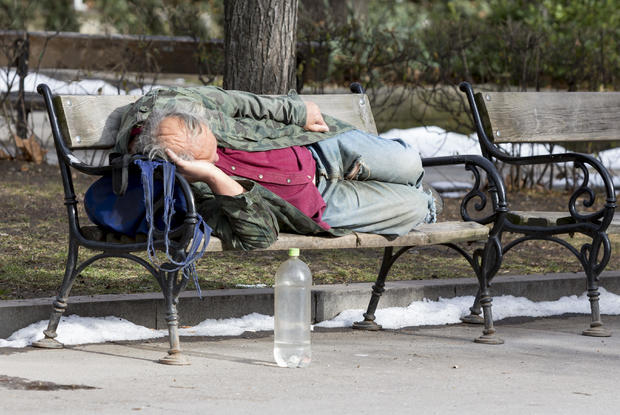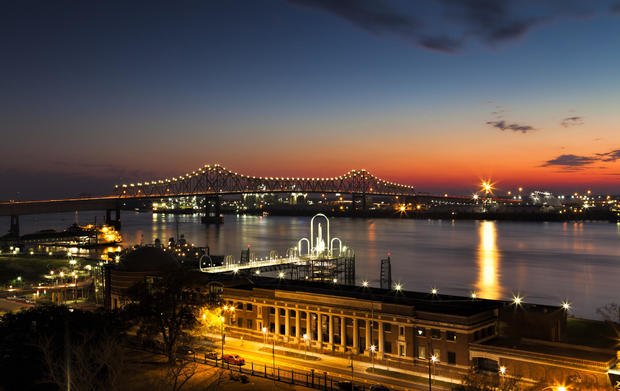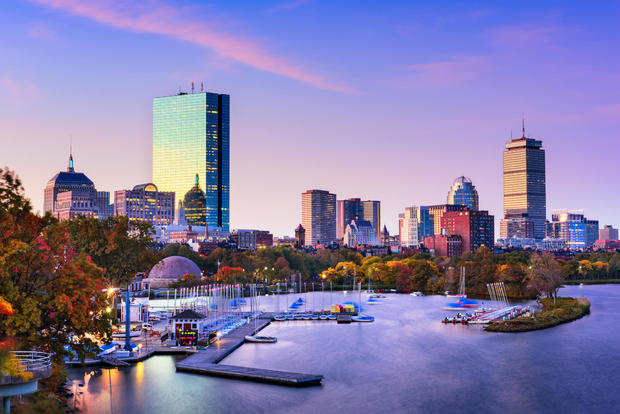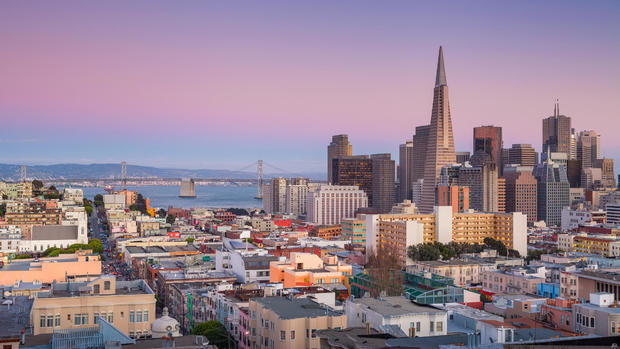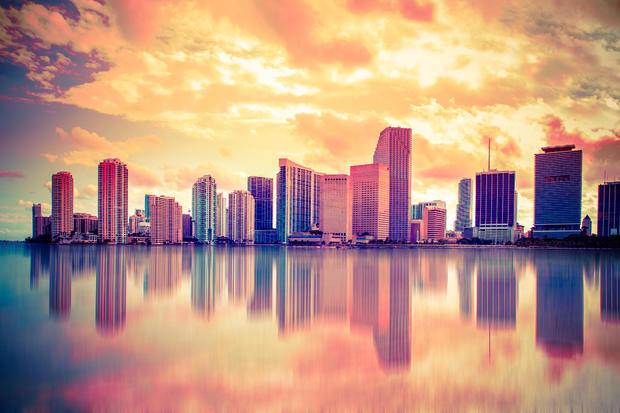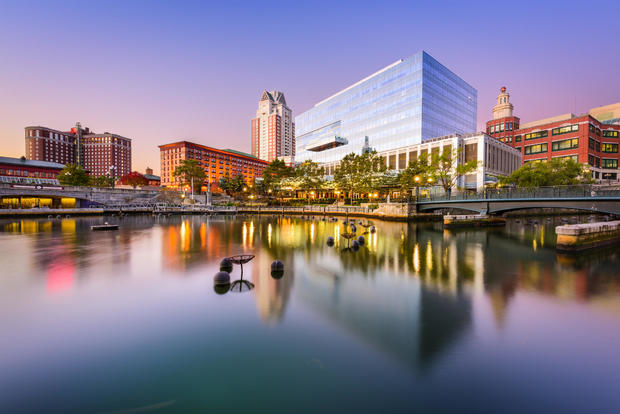9 American cities with the worst income inequality
The divergence between rich and poor is growing in some regions, creating affordability problems and straining fiscal budgets.
America is increasingly the land of haves and have-nots, but the problem isn't shared equally across the country. Some cities are struggling with greater income inequality than others, leading to crises concerning wages and affordability, according to a new study from The Brookings Institution, which examined income data from the country's biggest 100 cities.
Inequality is typically viewed as a national problem, yet the issue is also local, given that some cities are struggling with how to cope with a widening gap between rich and poor. That can affect everything from housing affordability to public safety, especially in tech-heavy cities where wealth divisions are exacerbating social and financial problems.
Cities that sprawl and those with strong middle-class employment tend to have lower levels of income inequality, while older cities that lack stable middle-class neighborhoods are more likely to suffer from a widening gulf between rich and poor, the researchers said.
"Some cities posted stunning increases in top incomes from 2014 to 2016," Alan Berube, senior fellow and deputy director of the Metropolitan Policy Program at Brookings wrote in the report. "The most astonishing changes in the mid-2010s occurred among high-income households in a few cities characterized by booming technology economies."
That has implications for the city that Amazon (AMZN) picks as home to its HQ2, or its second headquarters. The online retail giant has narrowed down its list to 20 contenders, ranging from Boston to Los Angeles.
"Many cities' aggressive bids for Amazon's second headquarters are heightening anxieties that the company's expansion could further accelerate inequality wherever it eventually lands," Berube noted.
Nevertheless, it's not only the rich who are better off. Poor residents in some cities have also enjoyed income gains, which paints a complicated picture of income inequality. The past decade of economic growth has created "separate ebbs and flows for households at different extremes of the distribution," he noted.
The problem, however, occurs when poor or middle-class families don't see that "flow" at the same time as the city's richest residents. In that case, they could get priced out of the region before they have a chance to catch up.
Read on to learn about the nine cities with the deepest income inequality.
9. Baton Rouge, Louisiana
This Southern city has enjoyed job growth, but not everyone is benefiting equally from the economic gains, according to a recent report from the Baton Rouge Area Foundation. Employers such as ExxonMobil (XOM) and Blue Cross and Blue Shield of Louisiana are among the area's biggest employers.
Residents in the 20th percentile of household income -- those in the bottom 20 percent of the income distribution -- earn median income of about $11,800 per year. Those in the 95th percentile earn about $202,385, creating a rich-poor income ratio of 14.2.
8. New York, New York
The Big Apple may be known for Wall Street and financial tycoons, but it also has plenty of poverty and a growing gap been rich and poor. The city of New York has a ratio of 14.7 between residents in the 20th percentile of household income and those in the 95th, Brookings found.
On an annual income basis, residents at the bottom of the income spectrum take home median earnings of $19,144, compared with $282,125 for the top.
7. Boston
Boston's income inequality ratio stands at 14.7, Brookings found. The city's economy has grown along with the fortunes of the tech industry and money management firms like Fidelity, which are based in the New England metropolis.
Residents in the bottom 20 percent earn median household income of $17,734, while those in the top 95th percentile earn $261,973.
6. San Francisco
The high-flying tech industry has bolstered the incomes of San Francisco's richest residents to spectacular heights. One reason the city doesn't score higher for income inequality is that its poorest residents tend to earn more than those in other U.S. locations.
The ratio between rich and poor stands at 15.9. Residents in the 20th percentile earn median household income of $31,840, while those in the 95th earn $507,824.
5. Miami
This Florida city has an inequality ratio of 16.3, Brookings found. Residents in the 20th percentile earn a median income of $12,311 per year, while the 95th percentile earns $200,530.
Jobs in Miami tend to be either high paying or low, according to Bloomberg News, which ranked the city as the worst for inequality in 2016.
4. New Orleans
Another Louisiana city makes the list, as New Orleans takes the fourth spot for the highest income inequality among the country's biggest 100 cities.
Years after Hurricane Katrina decimated the city, its effects are still being felt, according to a 2016 report from Prosperity Now, a nonprofit focused on expanding opportunities for low-income Americans. Many households never returned after the disaster, especially among the black population, and racial inequalities worsened because of the uneven recovery, the report noted.
The income inequality ratio is 16.4, with the 20th percentile earning median annual income of $12,373. The 95th percentile earns $203,254 per year, Brookings said.
3. Providence, Rhode Island
This New England city has an income inequality ratio of 16.7. Residents in the 20th percentile earn $12,118 per year, while those in the 95th percentile take home median annual pay of $202,021.
Worker advocates are pushing to boost Rhode Island's minimum wage to $15 an hour from its current $10.10, arguing that many families in the state are working multiple jobs to make ends meet.
Last year, Providence installed "giving meters" to encourage residents to donate to the poor and to discourage panhandling. They look like parking meters but are designed to collect donations.
2. Washington, D.C.
The nation's capital ranks second for income inequality, with a ratio of 17.5. Residents in the 20th percentile earn median household income of $20,152, while those in the 95th percentile take home $352,958.
A 2016 study from the DC Fiscal Policy Institute found the city's poorest families "suffered a dramatic loss of income" since the Great Recession, while the wealthiest families thrived. Most of the city's poor families are people of color, the report added.
1. Atlanta
Atlanta ranks as the nation's city with the biggest inequality problem. Its income inequality ratio is 18.1, with residents at the 20th percentile earning $16,927 per year compared with $306,307 for the 95th percentile.
The city's richest residents have enjoyed years of rising income, while its poorest have suffered from stagnant wages.
That shift means the latter are taking home a smaller share of the area's income, according to the Atlanta Regional Commission. It found that the poorest 20 percent of neighborhoods in an eight-county region around Atlanta had 17 percent of all family income in 1970. That has now tumbled to about 6 percent of all income.
